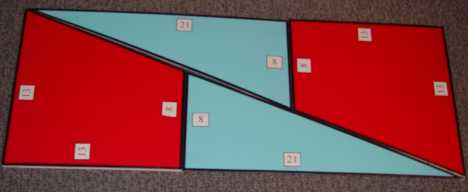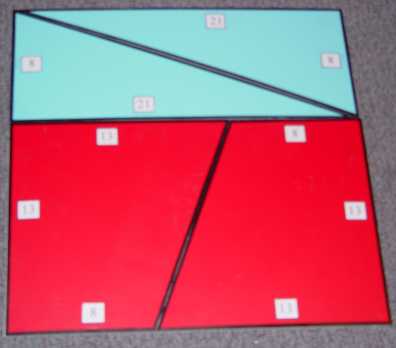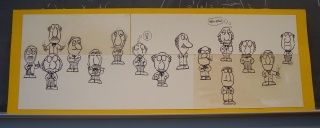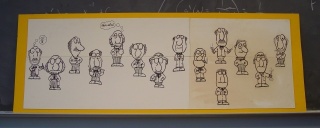Department of Mathematics, Statistics
and Computer Science
Wim Ruitenburg's Spring 2008 MATH025.1001
We need proofs if we want to know that something is most certainly true.
For example, when we compute n^2 + n + 41 for all whole numbers
from n = 0 to n = 39 we keep getting prime numbers.
We may guess that n^2 + n + 41 is prime for all numbers
n.
However, trial is not enough.
Indeed, we don't get a prime when we try n = 40.
How precise should mathematics and its proofs be?
Let us try some sloppy proofs.
A sequence of numbers
We define a sequence of numbers t(1), t(2), t(3), t(4), t(5), t(6),
t(7), and so on below.
First an abbreviation.
We write s(n) as short for the sum of the first n
terms of the sequence above, that is
- s(n) = t(1) + t(2) + t(3) + ... + t(n-1) + t(n)
Now define the sequence t(1), t(2), t(3), t(4), t(5), t(6),
t(7), as follows:
- t(1) = 2
- t(n+1) = s(n) + 1
So, for example,
- t(1) = 2
- t(2) = s(1) + 1 = t(1) + 1 = 3
- t(3) = s(2) + 1 = t(2) + t(1) + 1 = 3 + 2 + 1 = 6
- t(4) = s(3) + 1 = t(3) + t(2) + t(1) + 1 = 6 + 3 + 2 + 1 = 12
And so on.
Next we compute a nice formula for the terms t(n).
Check that the following three formulas hold for all n, by
deriving each from the preceding one.
- t(n+1) + s(n) = 2 * s(n) + 1
- s(n+1) = 2 * s(n) + 1
- s(n) = 2 * s(n-1) + 1
When we subtract the third equation from the second, we continue and get
- s(n+1) - s(n) = 2 * (s(n) - s(n-1))
- t(n+1) = 2 * t(n)
So each term is twice its predecessor.
Therefore
- t(1) = 2
- t(2) = 4
- t(3) = 8
- t(4) = 16
And so on.
In particular, with the earlier computation of t(2), we get
4 = 3.
Subtract 3 from both sides to get 1 = 0.
A square of area 441, a rectangle of area 442
Here is a smaller size example of the model we showed in class.
It is essentially the same one as in our book on page 60.
If we put the four pieces of the jigsaw together as on the right, we appear to
get an area of 65.
If, instead, we put them together as on the left, the area equals 64.
So 65 = 64, and thus 1 = 0.
 In class we showed an example by Nina Arezina, showing that 442 = 441.
Here are the pictures:
In class we showed an example by Nina Arezina, showing that 442 = 441.
Here are the pictures:


89 degrees equals 90 degrees
Click here to find an example of a picture proof
which appears to show that 90 = 89.
Subtract 89 from both sides and we get 1 = 0.
A disappearing professor
In class we showed a three-part puzzle, consisting of one base piece and
two top pieces.
We can put the two top pieces in two ways above the bottom piece.

 As the pictures show, in one case we see 15 professors, in the other we
see 14 professor.
So 15 = 14, and therefore 1 = 0, the value of one
math professor.
As the pictures show, in one case we see 15 professors, in the other we
see 14 professor.
So 15 = 14, and therefore 1 = 0, the value of one
math professor.
Last updated: May 2008
Comments & suggestions:
wimr@mscs.mu.edu





